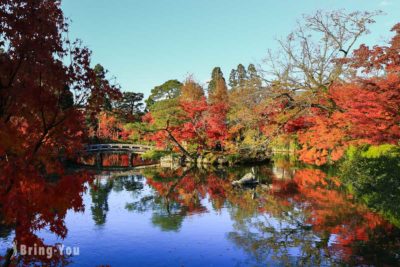Among the various Kyoto maple leaf viewing spots, the most stunning one is undoubtedly the “King of Maple Leaves” – Tofukuji Temple and its follower “Eikando”. However, my personal favorite is Eikando. Eikando, which has been famous for its maple leaf viewing in Kyoto since ancient times, usually turns red in mid-November, and the best time to view maple leaves is around late November. With over 3,000 maple trees blooming like flames, the red leaves, night maple leaves, and lake reflections, along with the ancient tower and Zen atmosphere, if you come to Kyoto to view maple leaves, you haven’t truly seen the most beautiful maple leaves in Kyoto until you visit Eikando!
🍁 More Kyoto and Osaka Maple Leaf Viewing Spots:Kyoto and Osaka Maple Leaf Information/Ginkgo/Night Maple Leaf Time Forecast and Top 10 Kyoto and Osaka Maple Leaf Locations
What is the transportation method to get to Yongguan Hall?
- Address: 48 Eikandocho, Sakyo-ku, Kyoto, Kyoto Prefecture
- Official Website
- Transportation: Take bus No. 5 from JR Kyoto Station, which passes through Shijo Kawaramachi and Kawaramachi Sanjo in the city center. Get off at “Nanzenji Eikando-do” and walk for 3 minutes.
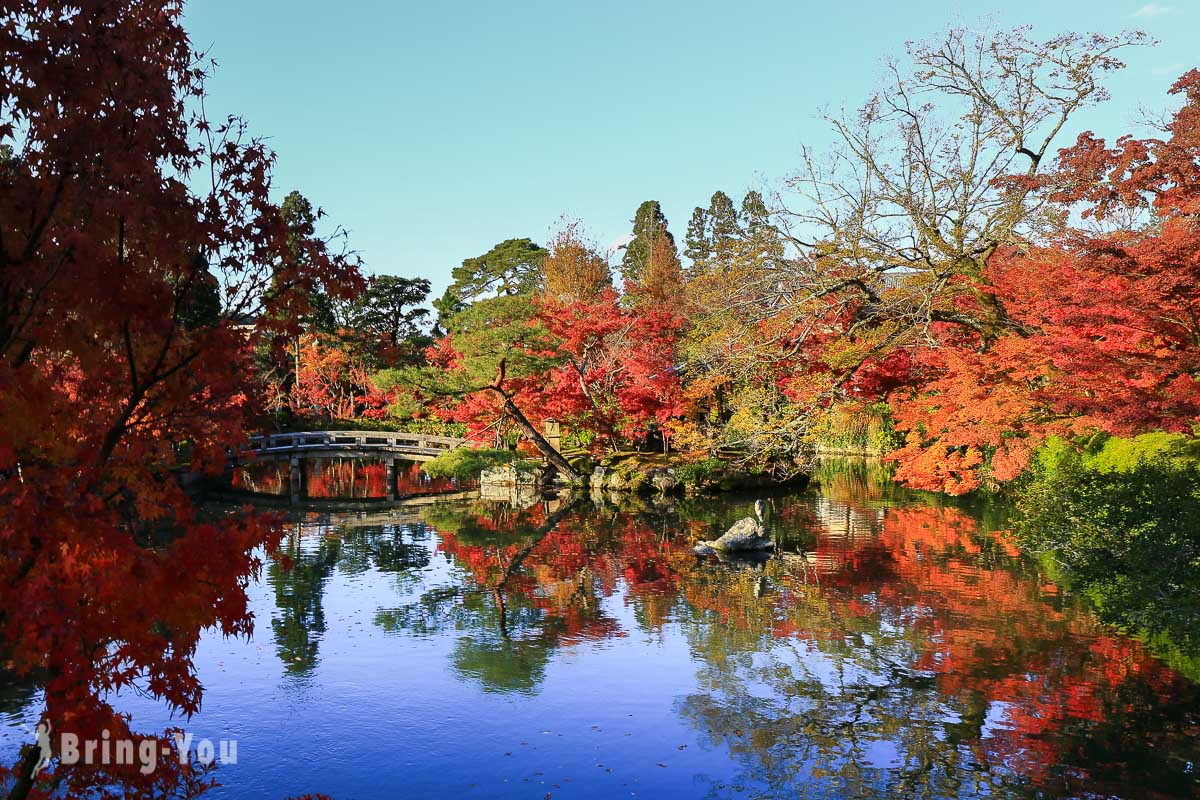
Yongguan Hall is located in the Sakyo Ward of Kyoto. It is a 5-minute walk from Nanzen-ji Temple and about a 20-minute bus ride from Ginkaku-ji Temple. It is highly recommended to visit during the autumn foliage season, where you can walk or see the maple leaves at the free and highly recommended Shinnyo-do Temple, as well as arrange a visit to Nanzen-ji Temple. If you depart from Kyoto Station, you can take the city bus system number 5 from the “A1” bus stop and get off at “Nanzen-ji Eikando-michi”.
How to take Kyoto buses?Kyoto Bus Guide: Introduction to Using One-Day Bus Passes, Types of Buses, and Route Maps in Kyoto
Yongguan Hall Night Maple Viewing Time
- Ticket Prices: Daytime admission fee is 600 yen for adults and 400 yen for students.
- During the autumn exhibition period from November to December: Daytime admission fee is 1,000 yen for adults and 600 yen for night admission.
- Daytime opening hours: 09:00-17:00 (last admission at 16:00).
- Nighttime maple viewing hours: 17:30-21:00 (last admission at 20:30).
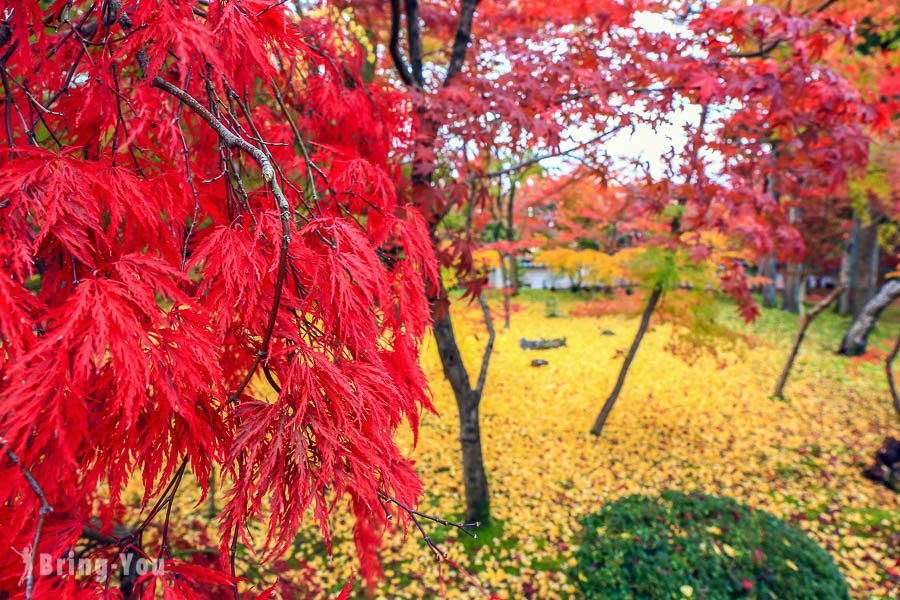
Yongguan Hall has been known as “Red Leaf Yongguan Hall” since ancient times. During the day, you can enjoy the spectacular red leaf scenery of Yongguan Hall from the Duobao Tower. At night, you can admire the maple leaves reflected in the release pond. Each has its own charm, but it is important to note that the special autumn worship time at Yongguan Hall is on a day-night alternating basis. Therefore, you cannot stay at Yongguan Hall from day to night. The hall closes at 5:00 pm and reopens at 5:30 pm for the evening lighting, and you will need to purchase another ticket to enter again!!! The differences are as follows for your reference:
- Maple Leaf Season Daytime Visit: Admission fee of 1,000 yen, last entry at 16:00, visit all attractions including many pagodas and halls.
- Maple Leaf Season Nighttime Visit: Admission fee of 600 yen, entry opens at 17:30, only the scenery of the Jizo-do Temple’s night maple lighting is available, and the other halls are not open for visitation.
Introduction to Yongguan Hall
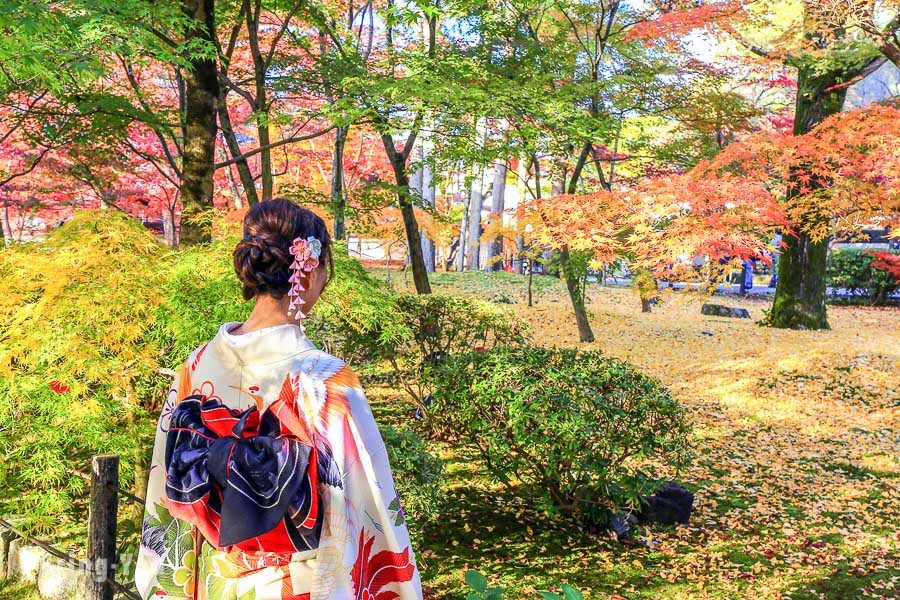
Yongguan Hall was founded by the disciple of the great master Kukai, Monk Zhen Shao, in the early Heian period 1000 years ago. It was initially called “Zenrin Temple”, and later changed its name to “Yongguan Temple” when it was passed down to the seventh generation, the eminent monk Yongguan, who was proficient in medicine and had academic prestige and social status.
Yongguan Hall Scenic Spot
In autumn, the entire area of Yongguan Temple will be covered with red, yellow, and orange leaves, as if you can enjoy the maple scenery from every angle of 360 degrees. The following is an introduction to the visiting route from the main gate of Yongguan Temple.
From Main Gate to Central Gate
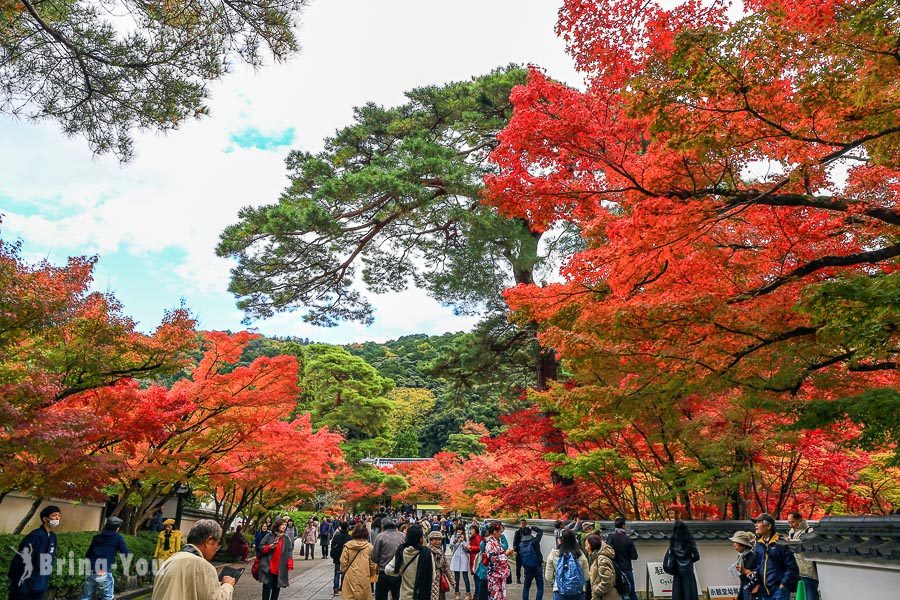
In addition to the main gate and middle gate that can only be seen in castles or mansions, Yongguan Hall is also surrounded by various maple trees on both sides of the path leading from the main gate to the ticket booth. The layers of red, yellow, and orange leaves welcome me without having to pay for admission. I am filled with anticipation at the sight of such lush maple leaves!
Crane Longevity Terrace
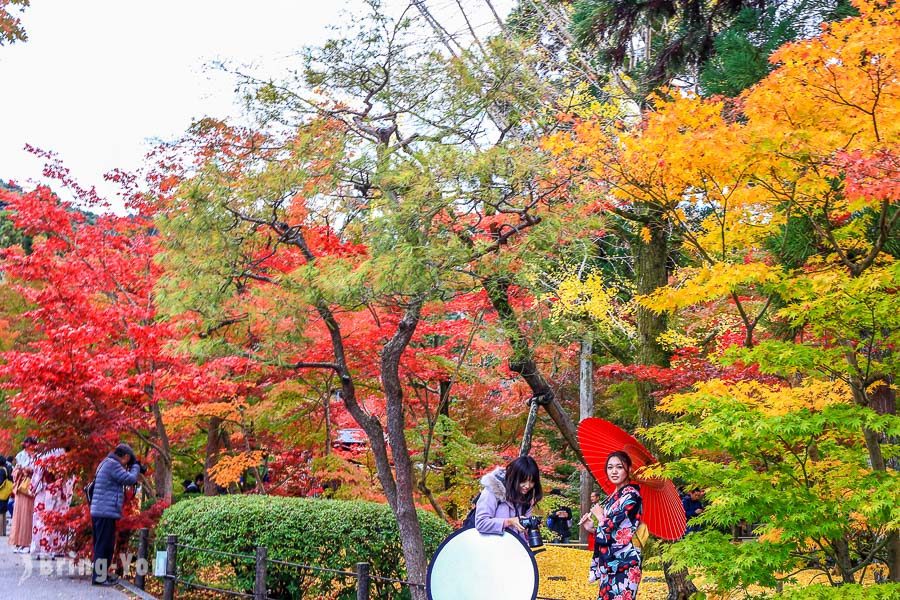
Upon entering Yongguan Hall through the central gate, visitors will first see a row of maple trees in front of the Crane Longevity Platform. This is also one of the most popular spots for visitors to enjoy the autumn foliage at Yongguan Hall.
Tangmen
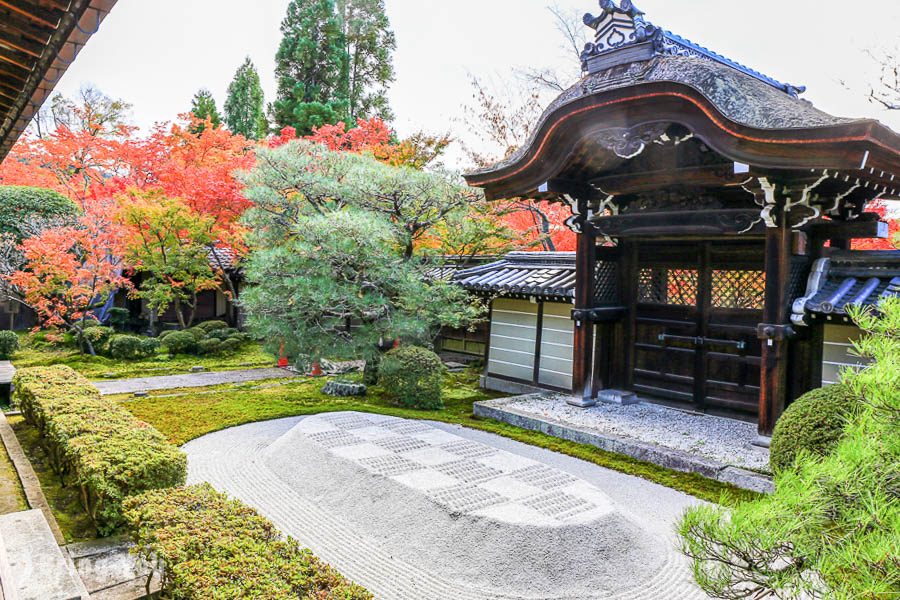
Next, you can enter the various halls from the main entrance. The first thing you see is the Tang Gate, which was the entrance and exit for the emperor’s envoys in ancient times. It is also a sign of respect to cleanse oneself with sand after entering.
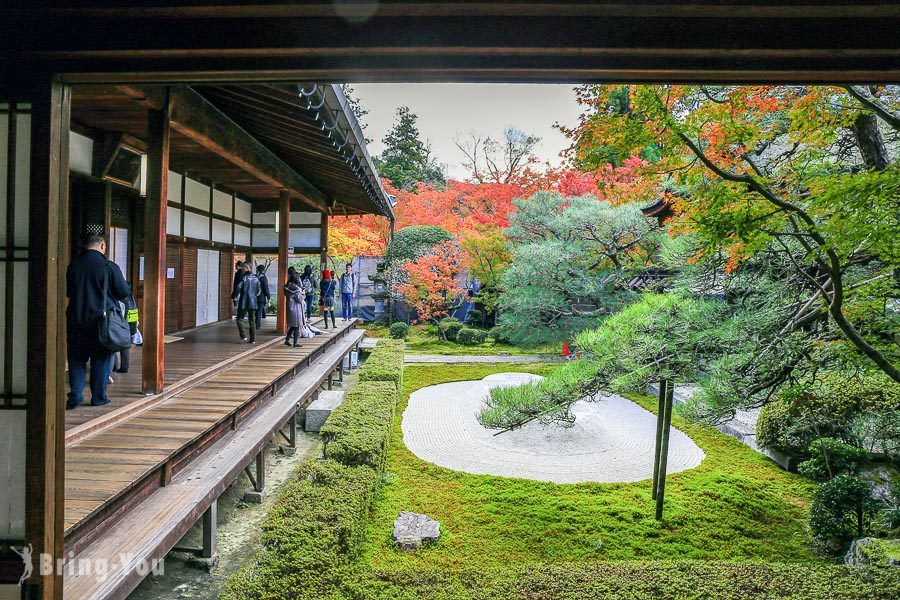
Follow the tour route through the Shakado, Yugendo, Gyoran corridor, and Kaizan-do, and then leave the various halls from the Amida-do.
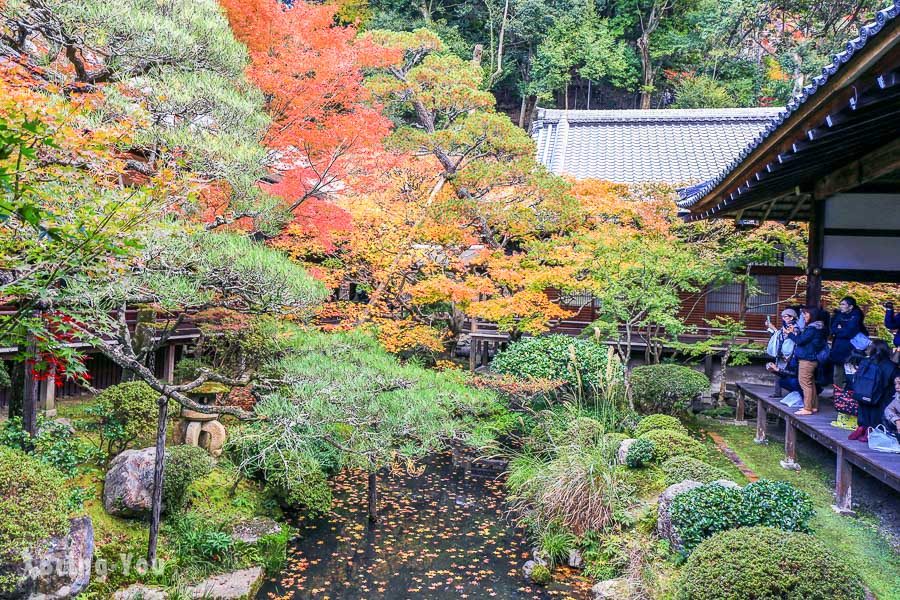
Amitabha Temple (No Photography Allowed)
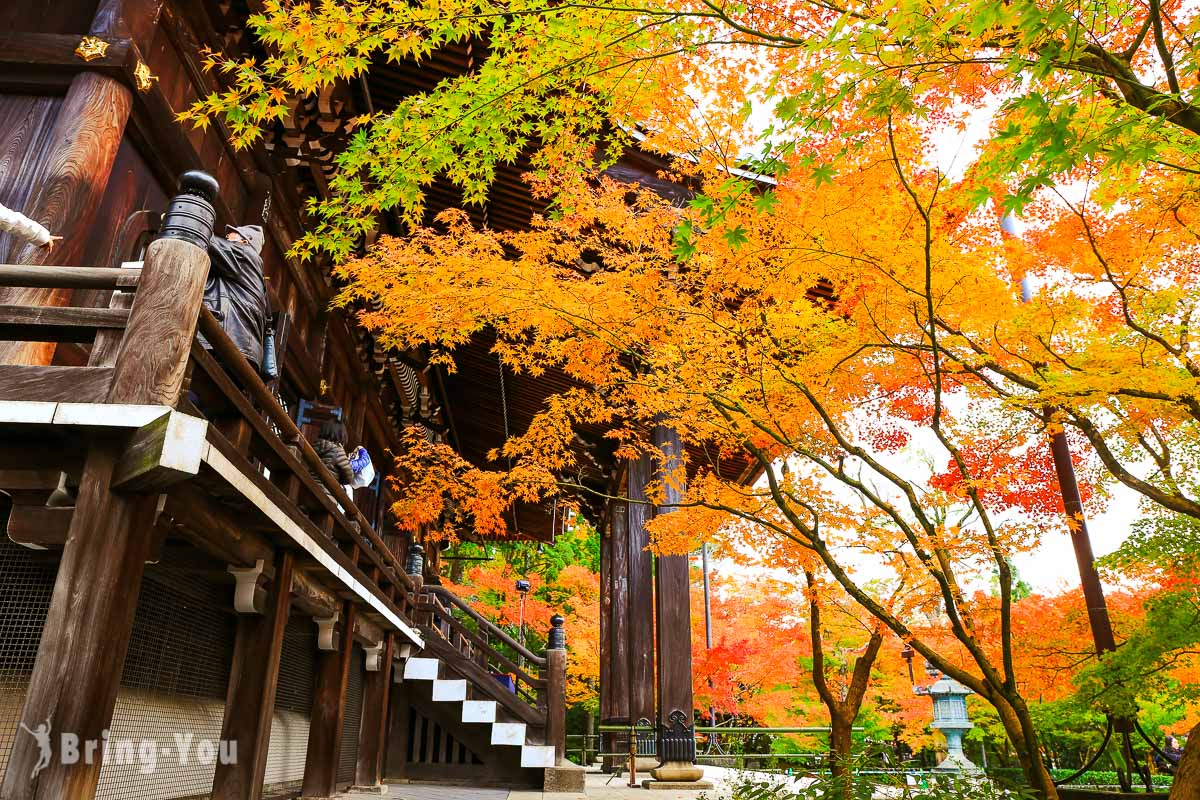
As the main temple of the Xishan Chanlin Temple of the Pure Land School, Yongguan Hall houses numerous treasures and important cultural properties, including the national treasure hand-painted colored Shan Yue Amitabha painting. The Amitabha Buddha Hall is where Yongguan Hall preserves the main statue of Amitabha Buddha in the Chanlin Temple. This statue, known as the “Looking Back Amitabha Buddha Standing Statue,” is not only the treasure of Yongguan Hall, but also the only one of its kind in the world, designated as an important cultural property!
Legend has it that in 1082, Yongguan Zhengyi was reciting Buddhist scriptures while wandering near Amitabha Buddha. Suddenly, Amitabha Buddha descended from the summit of Mount Sumeru and began to walk with Yongguan. Startled, Yongguan stopped, and Amitabha Buddha turned his head and said, “Yongguan is too slow.” From then on, Amitabha Buddha’s head never turned back, and he was enshrined in the main hall in a posture of looking back, hence the name “Standing Statue of Amitabha Buddha Looking Back”.
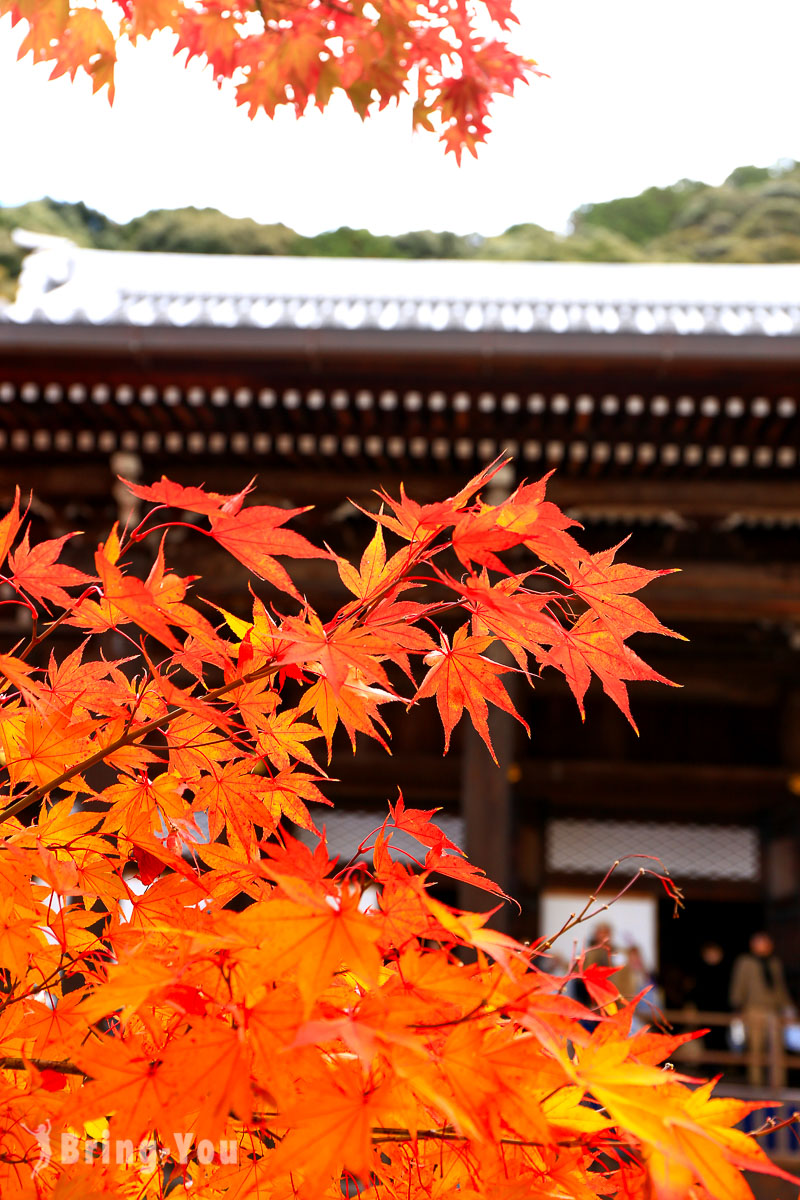
DuoBaoTa
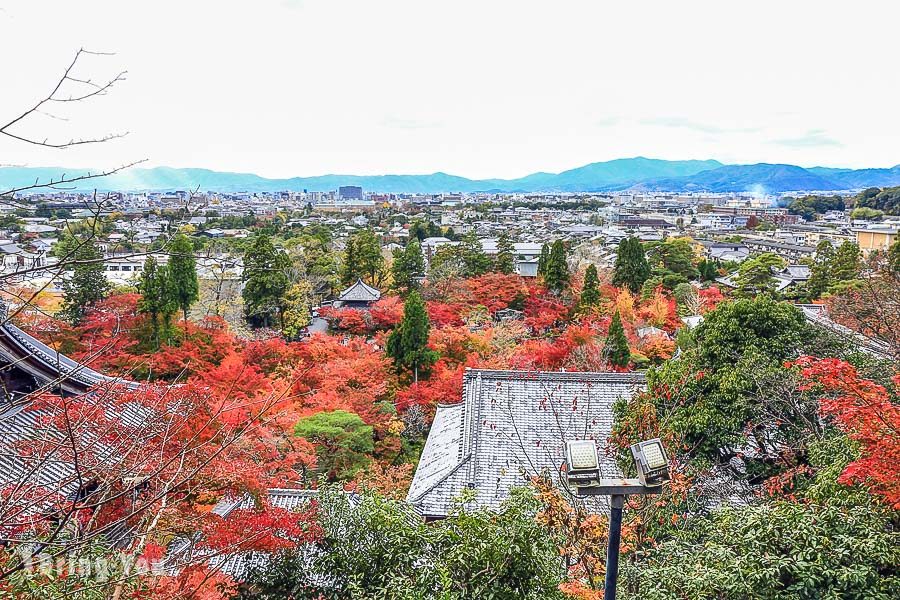
After visiting the Amida Buddha Hall, it’s time to enjoy the maple leaves outdoors! First, we climb uphill to the multi-treasure pagoda, which has a design resembling a five-story tower. It’s a perfect spot for Yongguan Hall to overlook the maple leaves. Climbing up the multi-treasure pagoda from the side of the Yuying Road, besides being able to overlook the Yongguan Hall surrounded by red leaves, the entire view of Kyoto city can be seen at a glance.
Release Pond
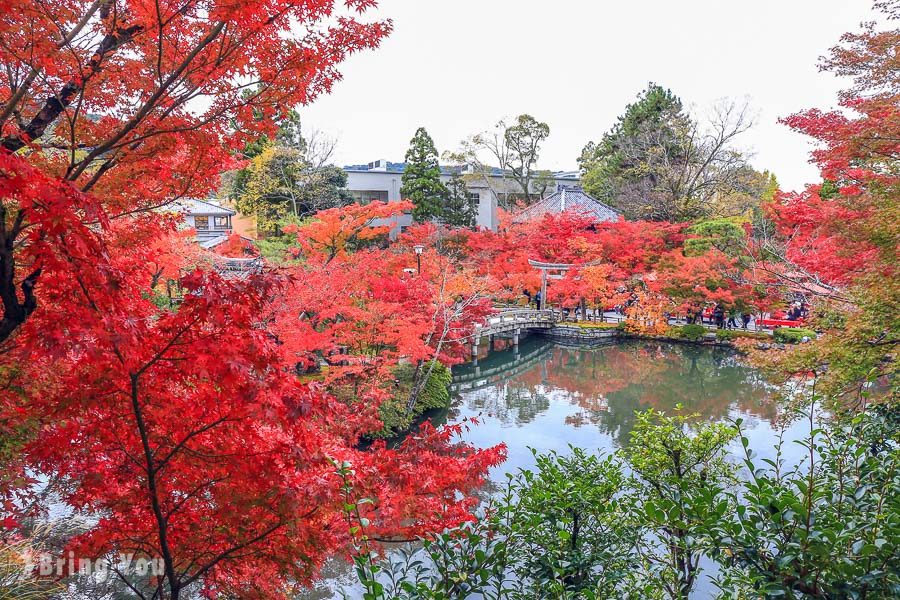
Next, we descend back to the ground, which is the most beautiful spot of Yongguan Hall and also the place where the Night Maple Lighting takes place – the “Release Pond”. The reflection of the maple leaves in the Release Pond is not only famous at night, but also beautiful during the day.
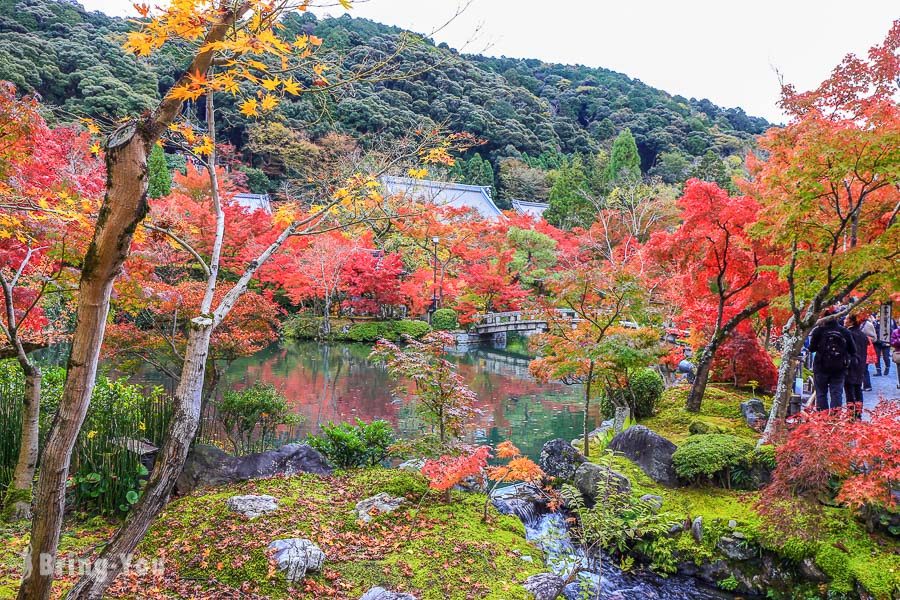
If you come in the evening, the beauty of Yexiang is completely different from that of the daytime. At night, it is illuminated by night lights, and the pond, corridor-style garden, Tang gate, multi-tower, Yuying Hall, and release pond are decorated with fallen red leaves, like a fairyland.
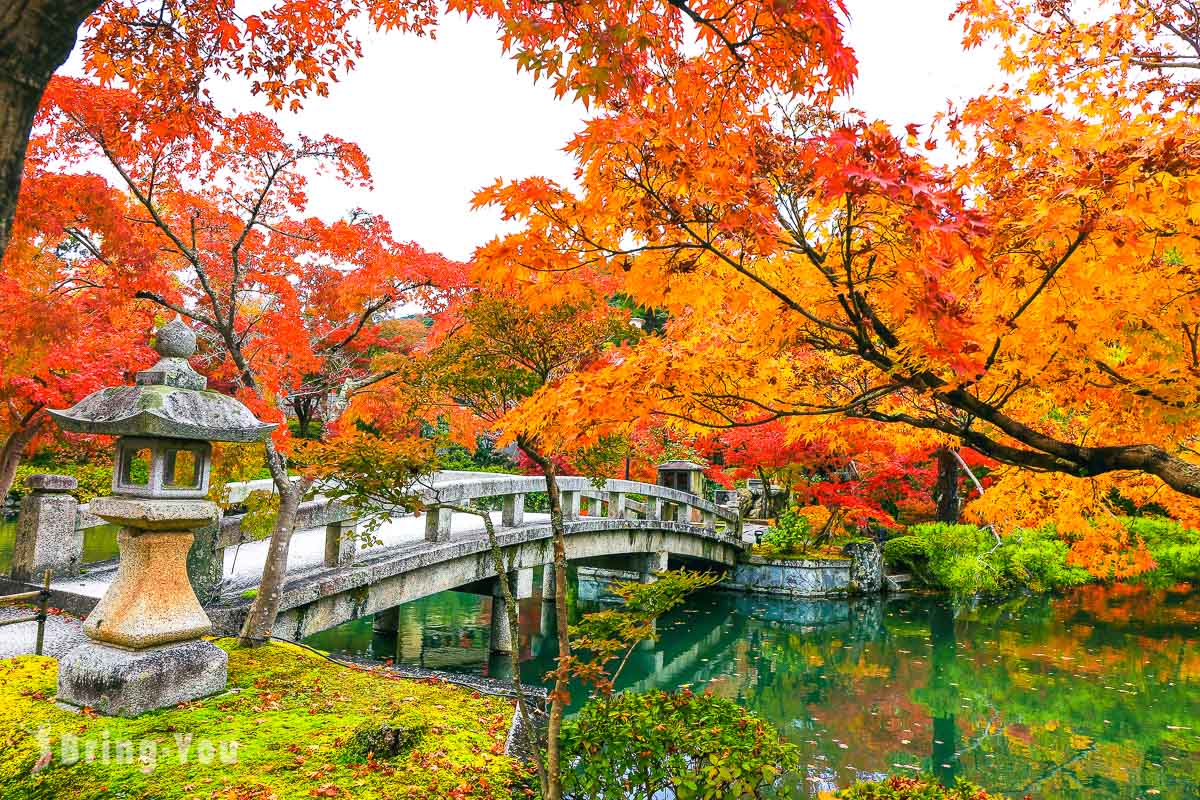
Entrance to the Ji Le Bridge, but access is prohibited during the maple leaf season.
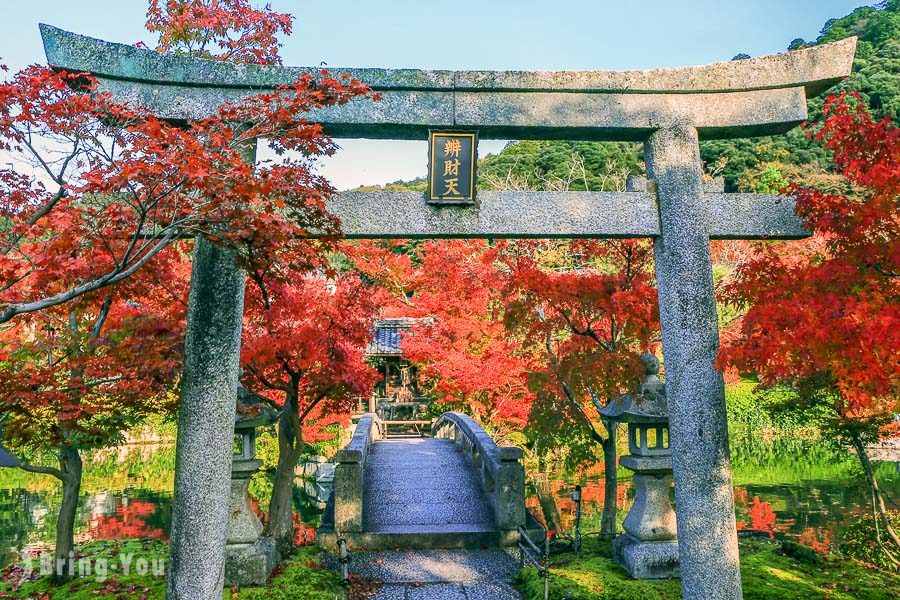
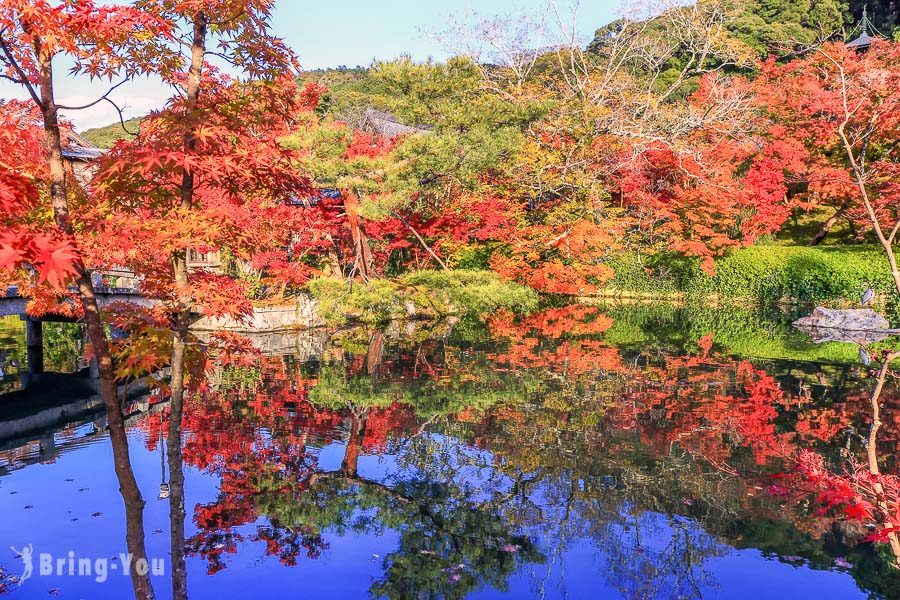
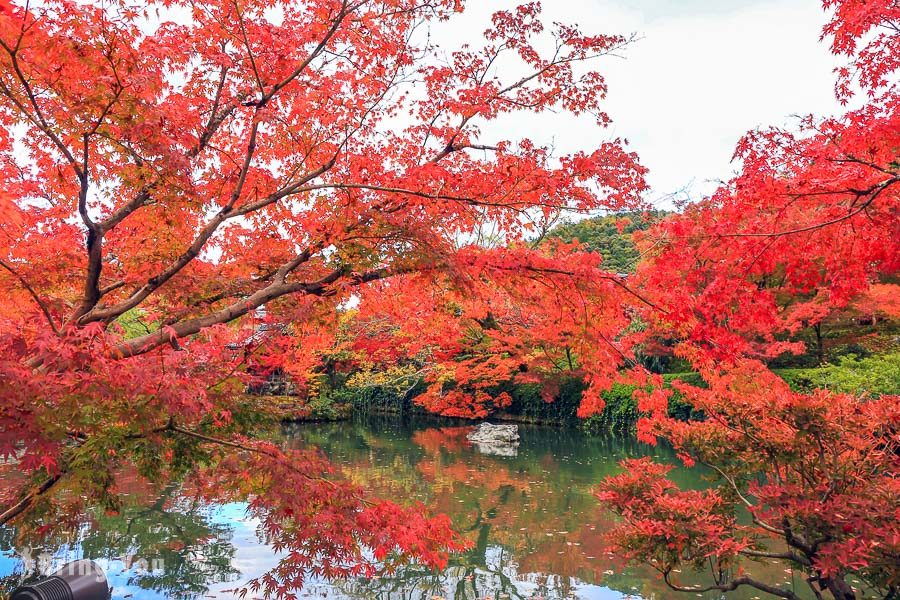
The bright scenery of the maple leaves and the reflection of the blissful bridge in the release pond are the classic photos of Yongguan Hall.
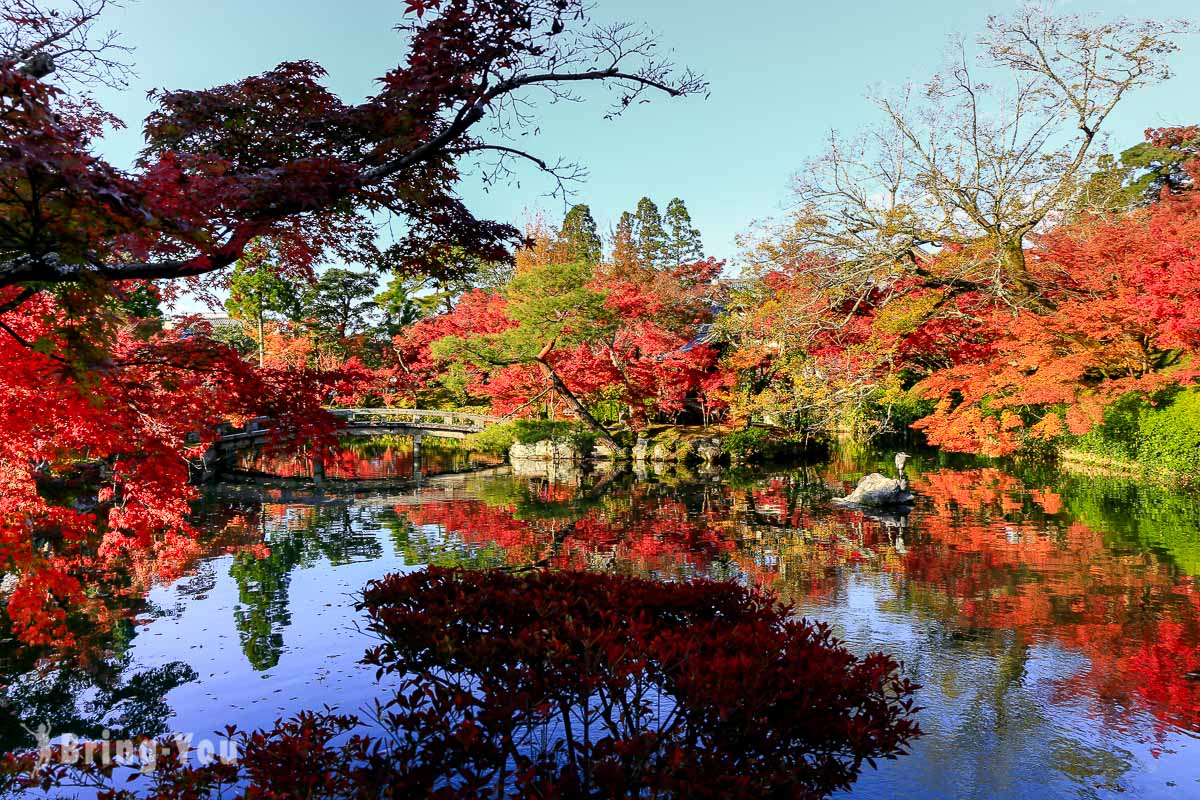
Before, too many people crowded on the Jile Bridge to take photos. Since 2018, visitors have been prohibited from going up during the maple viewing season. Now, you can take a clear shot of the Jile Bridge from a distance.
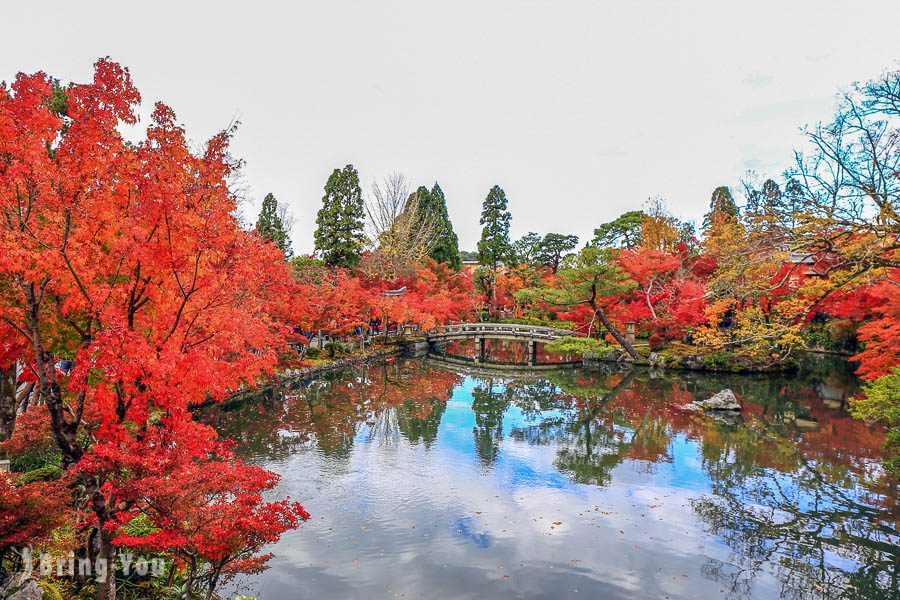
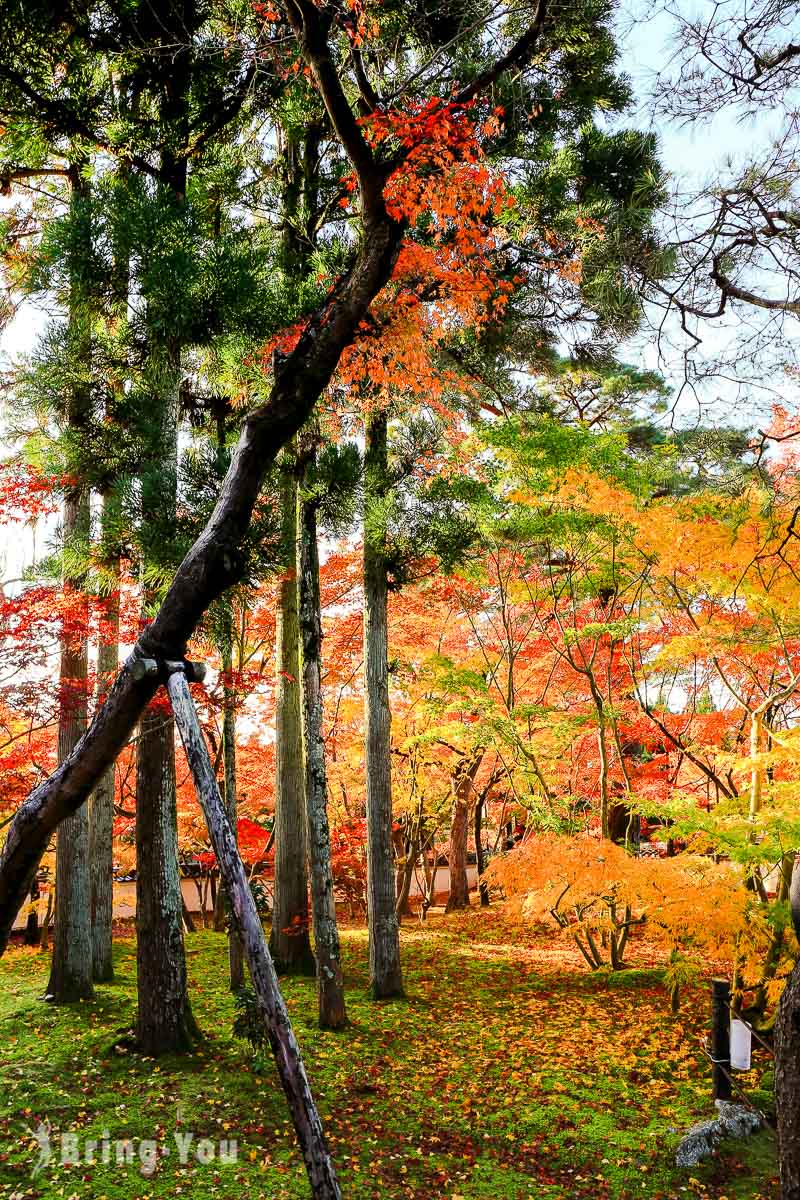
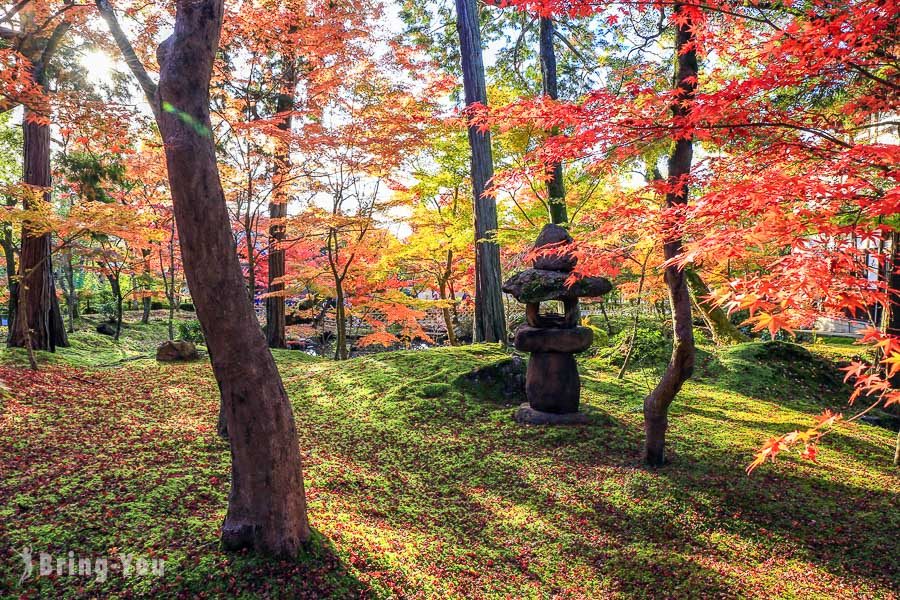
Conclusion
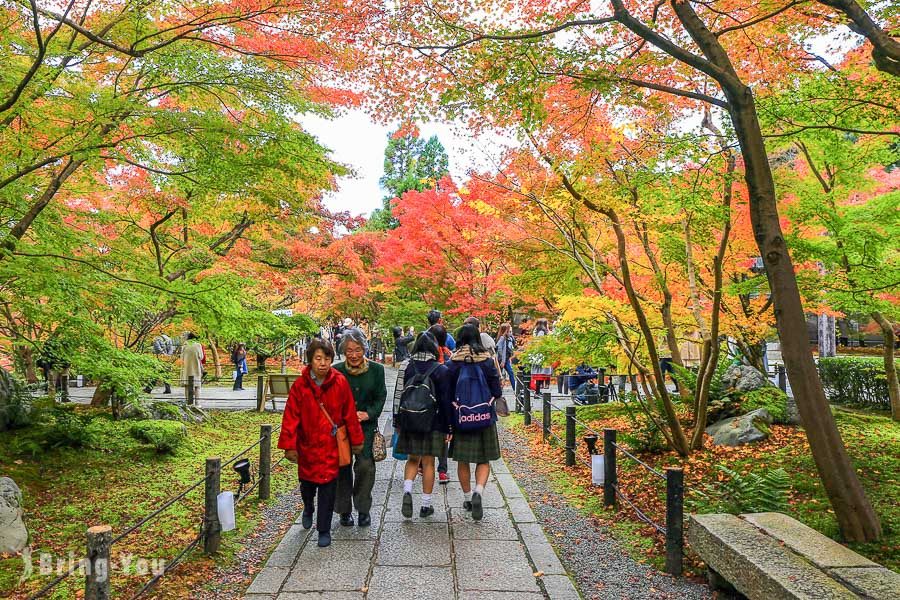
The maple leaves at Eikando Temple are truly stunning! It is one of the few places in the city of Kyoto where you can see large areas of yellow, red, orange, and green maple leaves all at once. Although I dislike crowds, the beauty of Eikando Temple is worth it!
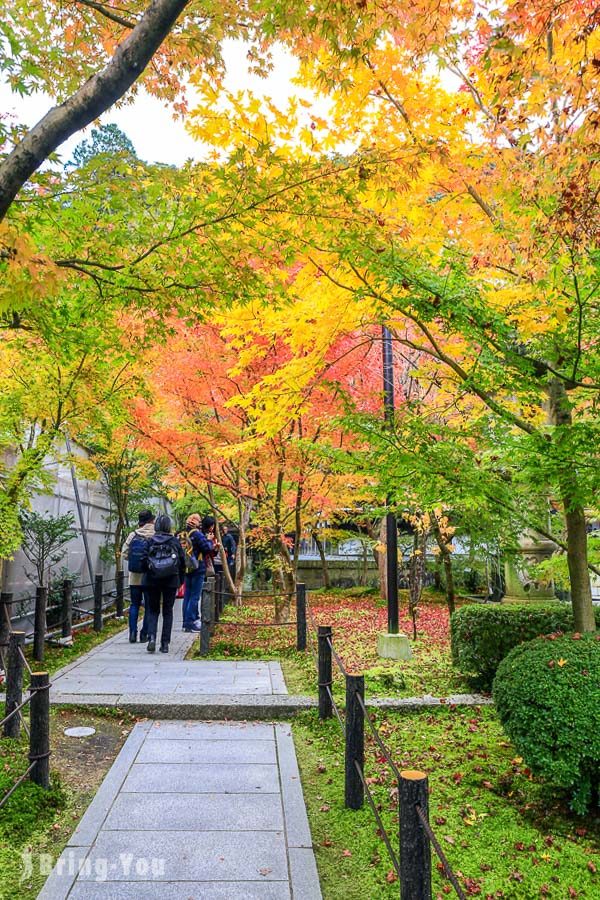
One-day itinerary for visiting Ginkaku-ji, Eikan-do, and Nanzen-ji
As Yongguan Hall is quite close to Nanzen-ji Temple, Philosopher’s Path, and Ginkaku-ji Temple, a free itinerary for autumn maple viewing can start with a visit to Ginkaku-ji Temple, then walk along Philosopher’s Path southward to Yongguan Hall, and finally reach Nanzen-ji Temple. If you have enough energy, you can take a ride to other Kyoto maple viewing spots such as Kiyomizu-dera Temple and Tofuku-ji Temple. It is definitely the most stunning Kyoto trip in autumn!
Nearby Tourist Attractions
- [Nanzenji Temple] Must-See Three Gates, Abbot’s Garden, and a Great Place to See Cherry Blossoms in Spring and Maple Leaves in Autumn
- [Ginkakuji] One-Day Trip Guide to the Philosopher’s Path with a Dry Landscape Garden
- [Kyoto Maple Viewing Spots] Shinnyo-do: A Free Maple Viewing Spot Near Nanzenji Temple
Recommended Itinerary for Enjoying the Autumn Foliage Season in Kyoto
【Suggested Itinerary for a One-Day Trip during Autumn Leaves Season】Ginkakuji Temple → (by bus) Shinnyo-do Temple → (by bus) 【Lunch】Yamamoto Menzou or Hinode Udon → Eikando Zenrinji Temple → Nanzenji Temple → Okazaki Area
Recommended attractions near Yongguan Hall during cherry blossom season
- 【Kyoto Cherry Blossom Spots】The Philosopher’s Path: Cherry Blossoms in Spring, Greenery in Summer
- 【Kyoto Cherry Blossom Spots】Heian Shrine: Must-See Cherry Blossom Reflections and a Huge Torii Gate
- 【Kyoto Art Tour】Strolling Through the Kyoto National Museum and the World of Modern Architecture in the Okazaki Area
